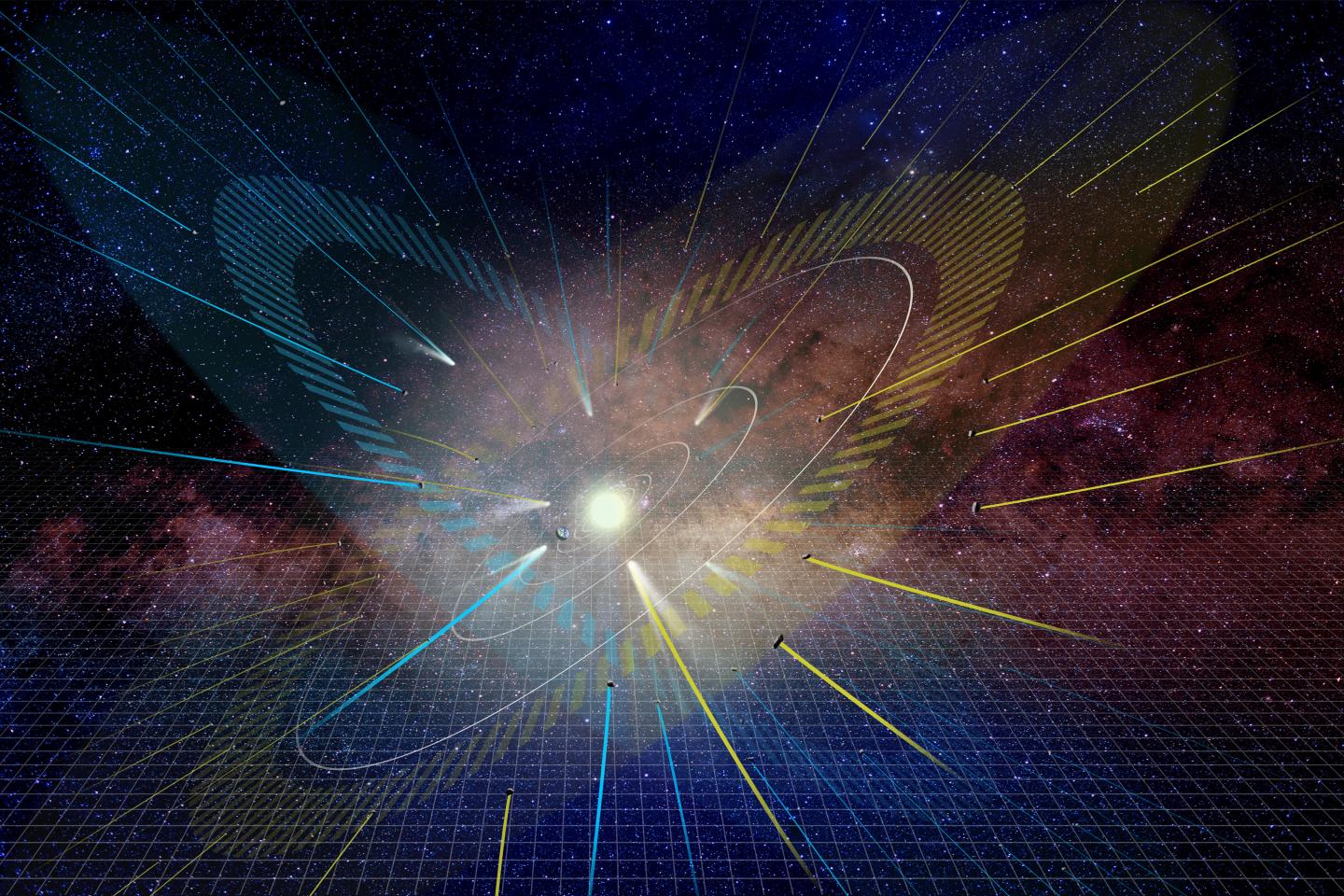A study of comet motions indicates that the Solar System has a second alignment plane. Analytical investigation of the orbits of long-period comets shows that the aphelia of the comets, the point where they are farthest from the Sun, tend to fall close to either the well-known ecliptic plane where the planets reside or a newly discovered “empty ecliptic.” This has important implications for models of how comets originally formed in the Solar System.
In the Solar System, the planets and most other bodies move in roughly the same orbital plane, known as the ecliptic, but there are exceptions such as comets. Comets, especially long-period comets taking tens-of-thousands of years to complete each orbit, are not confined to the area near the ecliptic; they are seen coming and going in various directions.
Models of Solar System formation suggest that even long-period comets originally formed near the ecliptic and were later scattered into the orbits observed today through gravitational interactions, most notably with the gas giant planets. But even with planetary scattering, the comet’s aphelion, the point where it is farthest from the Sun, should remain near the ecliptic. Other, external forces are needed to explain the observed distribution. The Solar System does not exist in isolation; the gravitational field of the Milky Way Galaxy in which the Solar System resides also exerts a small but non-negligible influence. Arika Higuchi, an assistant professor at the University of Occupational and Environmental Health in Japan and previously a member of the NAOJ RISE Project, studied the effects of the Galactic gravity on long-period comets through analytical investigation of the equations governing orbital motion. She showed that when the Galactic gravity is taken into account, the aphelia of long-period comets tend to collect around two planes. First the well-known ecliptic, but also a second “empty ecliptic.” The ecliptic is inclined with respect to the disk of the Milky Way by about 60 degrees. The empty ecliptic is also inclined by 60 degrees, but in the opposite direction. Higuchi calls this the “empty ecliptic” based on mathematical nomenclature and because initially it contains no objects, only later being populated with scattered comets.
Higuchi confirmed her predictions by cross-checking with numerical computations carried out in part on the PC Cluster at the Center for Computational Astrophysics of NAOJ. Comparing the analytical and computational results to the data for long-period comets listed in NASA’s JPL Small Body Database showed that the distribution has two peaks, near the ecliptic and empty ecliptic as predicted. This is a strong indication that the formation models are correct and long-period comets formed on the ecliptic. However, Higuchi cautions, “The sharp peaks are not exactly at the ecliptic or empty ecliptic planes, but near them. An investigation of the distribution of observed small bodies has to include many factors. Detailed examination of the distribution of long-period comets will be our future work. The all-sky survey project known as the Legacy Survey of Space and Time (LSST) will provide valuable information for this study.”
###
